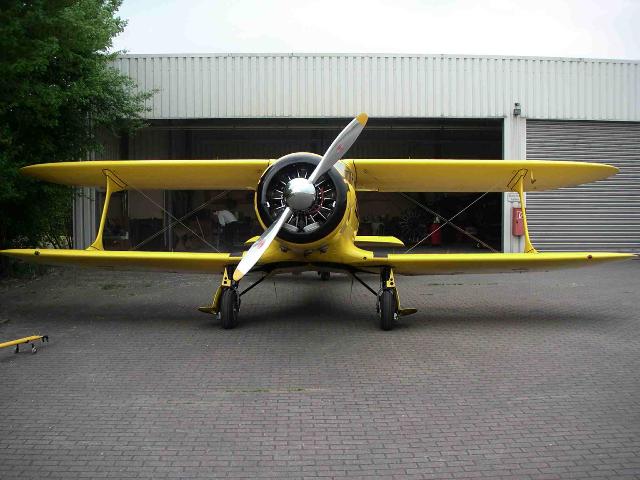
 |
 |
 |
 |
 |
 |
 |
 |
 |

785 Model 17 Staggerwings were produced between 1932 and 1949.
The first Beech 17 flew on 4th November 1932. The initial costs were between $14,000 and $17,000 depending on the engine size (225hp to 420hp)
With powerful engines, retractable undercarriage and fabulous smooth aerodynamics the Beech 17 Staggerwing outperformed all single-engine pre-war light aircraft
Each individual aircraft was a custom hand built aircraft
Louise Thaden and Blanche Noyes become the first women to win the Bendix Trophy transcontinental race from New York to Los Angeles flying a Beech Model 17 Staggerwing. This trip also won her the East to West speed record.
In 1935 Capt. H. L. Farquhar successfully flew around the world in a model B17R. A total of 21,332 miles from New York to Heston. New York, Canada, Alaska, Russia, China, Siam, India, Iraq, Egypt, Tripoli and France.
The Beech 17 got it's pet name of Staggerwing following an air show in which a commentator was allegedly to have referred to the aircraft as having a staggered wing arrangement
To fulfil an urgent need for a high performance light personnel transport aircraft, the British Royal Air Force received 106 Staggerwings. During their service with the RAF they were renamed Travellers
During World War II Beech 17s were delivered to the US Navy (renamed GB1 and GB2) and also to the US Army Air Force (renamed UC-43).
There are around 200 aircraft around the world at the time of writing. Many of these are still operational and are flown regularly. The vast majority of these are to be found in the US and Canada.
The Staggerwing production ended in 1948, with the last aircraft leaving the factory in 1949
What followed directly, was the all metal Beechcraft Bonanza, after many mods still in production today.
